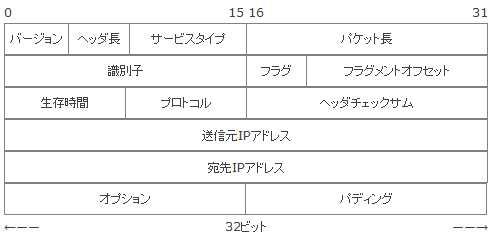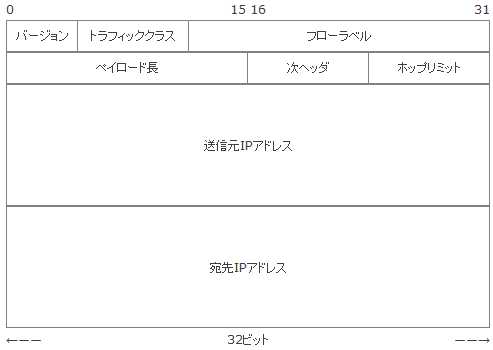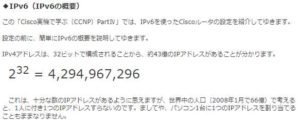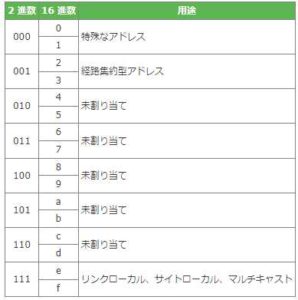IPv6 (IPv4/IPv6 header format)
IPv6 (IPv4/IPv6 header format)
First, the figure shows the IPv4 and IPv6 basic formats.
Next, I will introduce the features and benefits of IPv6.
IPv4 basic header format

IPv6 basic header format

Characteristics of IPv6 header
Now that we have confirmed the IPv4 and IPv6 basic formats, we will explain the features and advantages of IPv6.
● Fewer fields
IPv4 header size is 20 bytes, IPv6 header size is 20 bytes. The IPv6 header size is 20 bytes larger than the IPv4 header size, but the number of fields has been reduced from 12 to 8. This means less load on intermediate routers.
Changed from TTL to Hop Limit
There is TTL (Time To Live) in the IPv4 header. This value is a value that changes each time it passes through a router. Due to this changing TTL, the header checksum value must be recalculated at each router. This puts a heavy burden on the router and causes delays.
In IPv4, the TTL field specifies either the number of remaining router hops or the time to live, but only the number of hops is actually used. Therefore, in IPv6, the name was changed to hop limit, and only the number of hops is standardized.
●From variable length to fixed length
The IPv4 header has an options field. This part contains information about various additional services, such as encryption. This makes the headers variable length, making it difficult for routers to handle in hardware. On the other hand, the IPv6 header has a fixed length of 40 bytes, so routers can speed up processing.
These things reduce the load on routers and switches when forwarding packets.
● Fewer fields
IPv4 also performs checksums at the IP layer. Layer services below IP are more reliable than they used to be. Nevertheless, even in the TCP/UDP layer, checksums are performed including TCP/UDP information, a “pseudo-header” consisting of destination IP address, destination IP address, protocol number, and data length.
For this reason, IPv6 abolishes header checksums at the IP layer.


